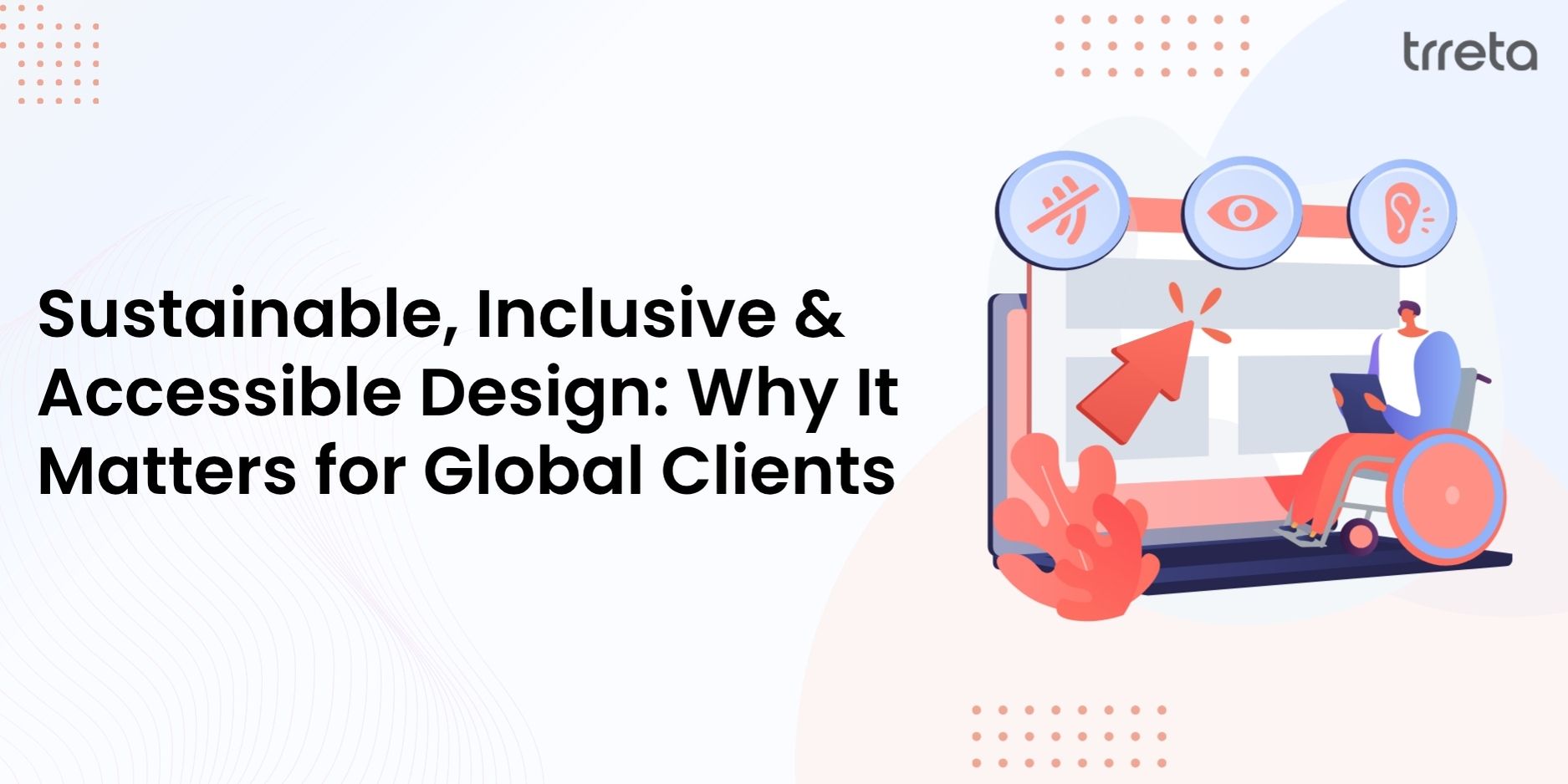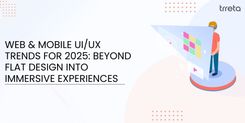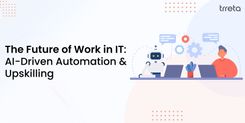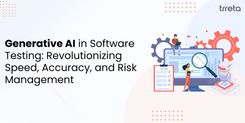Design isn’t just about how something looks anymore — it’s about how it behaves.
In 2025, global clients don’t only care about how sleek your app or website feels; they care about how responsibly it was built. They want to know it respects people, the planet, and progress.
Whether you’re creating a SaaS product, a mobile app, or a large-scale enterprise site, sustainability, inclusivity, and accessibility are no longer optional. They’re signs of design maturity — the mark of teams that think beyond the interface.
Let’s break down what these principles mean, why they matter, and how designers and developers can turn them into practice.
1. From “Good Design” to “Conscious Design”
For years, “good design” meant clean visuals, bold fonts, and smooth user journeys. But users today are more aware. They’re asking deeper questions: Was this product built responsibly? Does it consider everyone?
This shift has given rise to Conscious Design — an approach that blends sustainability (the planet), inclusivity (people), and accessibility (practical usability). It’s not just design for screens anymore. It’s design for society.
2. Sustainable Design: Building for the Planet
Every image you load, every animation you watch, every click you make — all of it consumes energy. Multiply that by billions of users, and you have a real environmental impact.
Sustainable design focuses on reducing this digital footprint without sacrificing performance or beauty.
Here’s how it looks in action:
- Optimized performance: Cleaner code, compressed images, and efficient scripts.
- Energy-smart visuals: Dark mode and thoughtful color palettes that consume less power on OLED screens.
- Green hosting: Servers powered by renewable energy.
- Purposeful minimalism: Every element serves a reason, not just decoration.
Why clients care:
Most global brands now have ESG (Environmental, Social, Governance) commitments. Working with partners who practice sustainable design helps them meet those goals — and strengthens brand reputation.
Bottom line: sustainability isn’t a feel-good gesture; it’s a competitive edge.
3. Inclusive Design: Building for Everyone
For too long, design assumed a “default user” — young, able-bodied, tech-savvy, and English-speaking. Everyone else was an afterthought.
Inclusive design throws that idea out. It’s about designing for real human diversity — age, ability, culture, gender, and language.
What it looks like in practice:
- Using imagery that represents real people — different ethnicities, body types, and cultures.
- Creating interfaces that work for left-handed or color-blind users.
- Offering multiple ways to interact — voice, text, touch, gesture.
- Writing copy that’s globally understandable and culturally neutral.
Why clients care:
For multinational brands, inclusivity expands reach. A product that works for everyone instantly opens new markets and earns deeper loyalty.
Inclusivity isn’t charity — it’s smart business.
4. Accessibility: The Foundation of Ethical UX
Accessibility is often reduced to a checklist — contrast ratios, alt text, keyboard navigation. But at its core, it’s about empathy.
It’s about ensuring that people with disabilities can use your product without needing special permission or assistance.
Accessible design means:
- Structured content that screen readers can understand.
- Alt text for every image.
- Captions and transcripts for videos.
- Clear tab orders and visible focus indicators.
- Predictable layouts that don’t overwhelm.
Why clients care:
In the EU, UK, and US, accessibility isn’t optional — it’s legally required. But beyond compliance, it builds trust. When users feel seen and respected, they stay loyal.
5. The Business Case: Purpose Meets Profit
Some teams still see ethical design as extra work. But the truth? It pays off — in visibility, loyalty, and longevity.
Here’s how:
- Better SEO: Accessible and efficient sites load faster and rank higher.
- Broader audience: Inclusive interfaces attract more users globally.
- Lower churn: Sustainable design improves performance and satisfaction.
- Stronger brand: Ethical companies attract both customers and top talent.
In a world where switching brands is effortless, your values are part of your product.
6. Developers: Engineering for Ethics
Design principles are only as strong as their implementation. Developers bring ethics to life through code.
For sustainability:
- Use modern, efficient formats like WebP or SVG.
- Trim unused CSS and JavaScript.
- Apply lazy loading for heavy assets.
For accessibility:
- Maintain semantic HTML.
- Use ARIA labels thoughtfully.
- Test regularly with accessibility tools.
For inclusivity:
- Support localization and multiple languages.
- Handle right-to-left text (Arabic, Hebrew, etc.).
- Build layouts that adapt across cultures.
When developers code consciously, they turn ethics into experience.
7. Designers: Balancing Aesthetics with Empathy
Designers shape how a product feels. Their responsibility is to merge beauty with understanding.
For sustainability:
- Favor minimal, meaningful visuals.
- Reuse design components.
- Choose typefaces and colors that save energy and support legibility.
For inclusivity:
- Test with diverse user groups.
- Watch for bias in imagery and tone.
- Use accessible color systems and contrast-tested design libraries.
Good design makes people stay. Great design makes people feel seen.
8. Measuring Impact: Proving It Matters
Sustainability and inclusivity can’t stay abstract ideals — they need metrics.
Global clients are now tracking things like:
- Carbon footprint per session (page size, load time, energy use).
- Accessibility scores (WCAG compliance).
- User diversity (demographics, feedback, reach).
- Engagement depth (retention and satisfaction).
When values are measurable, teams can refine them with purpose — not guesswork.
9. The Future: Ethics as the New Standard
Soon, sustainable and inclusive design won’t set brands apart; it’ll be the baseline.
Clients will expect proof — through certifications, audits, and transparent processes. They’ll want to see how you build, not just what you build.
Brands that adapt early will lead the future of responsible tech. The rest will play catch-up.
Final Thought
Sustainable, inclusive, and accessible design isn’t a passing trend. It’s the evolution of digital responsibility.
For designers and developers, it’s a chance to build with conscience. For clients, it’s reassurance that technology can be both human and fair.
Design shapes behavior. It influences thought. It defines progress.
The real question is — are we designing to exclude or to include?
The teams that choose empathy, sustainability, and inclusivity won’t just create better products. They’ll create a better digital world.




